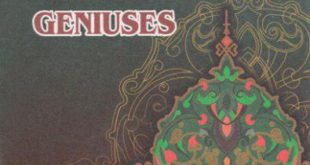In 1190/1776, “Hidaya” was translated into Persian by Ghulam Yahyakhan as a manual for the government offices of Bengal which was under the control of Eastern India Company. This translation was published in 1221/1807 in Calcutta. It should be noted that the first publication of “Hidaya” was made neither in …
Read moreUzbekistan: a land multifarious geniuses. BURKHAN AD-DIN MARGHINANI (Part 5)
In order to stress or draw the attention of the reader to the above-mentioned phrases or expressions, Burhan ad-din al-Marginoni, i.e. the author of the book “Hidaya”, used the phrase “Bima talavna…” (As has been uttered before…) for the above-mentioned ayahs, the phrase “Bima ravayna…” (As has been cited above…) …
Read moreUzbekistan: a land multifarious geniuses. BURKHAN AD-DIN MARGHINANI (Part 4)
In order to clarify the essence of a legal matter, it was necessary lot the author to review the main sources of Shariah at first, and then the scientific and legal works left by such well-known figures of the I Jamie science as Imam Abu Hanifa, Imam Malik, Imam Shafi’i, …
Read moreUzbekistan: a land multifarious geniuses. BURKHAN AD-DIN MARGHINANI (Part 3)
In the preface of “Bidayatu-l-mubtadi”, he wrote the following lines: “When I was a young specialist in the field of law, I used to think of a small laconic book with a wide content covering all the problems of law and legal matters. In the course of stepping the stages …
Read moreUzbekistan: a land multifarious geniuses. BURKHAN AD-DIN MARGHINANI (Part 2)
Burhan ad-din al-Marghinani studied the Hadiths mentioned by Abu Isa at-Termizi in his book “Al-Jami” from Abu Muhammad Said ibn Asad and al-Hasan ibn Ali al-Marghinani with their additions mentioned in al-Qurashi’s works. Because of his endeavours in this field, he reached a higher level of status than his teachers …
Read moreUzbekistan: a land multifarious geniuses. BURKHAN AD-DIN MARGHINANI (1123-1197)
Depending on the conditions of life and the style of their scientific heritage, the lawyers of Central Asia made a great service and unforgettable contribution to the development of the Islamic law, especially to the development of the Hanafian order and left immortal works for the future generation. The most …
Read moreUzbekistan: a land multifarious geniuses. ABU-L-BARAKAT AN-NASAFI (Part 4)
In most parts of his explanations of tafsirs Abu-l-Barakat an-Nasafi relies on the legends and ideas expressed by ibn Abbas, an rxperienced expert in tafsirs, the supporter and follower of the teachings of Prophet Muhammad (saas). Further, he uses the legends mentioned by Sahabas and Tabi’iys as Ibn Mas’ud, Anas …
Read moreUzbekistan: a land multifarious geniuses. ABU-L-BARAKAT AN-NASAFI (Part 3)
One of the important peculiarities of the tafsir is in the fact that philological features of the ayahs and their analyses are carried out in detail and with a great mastership. The full essence of Qur’an and its main ideas are revealed masterfully. To reach this purpose the author had …
Read moreUzbekistan: a land multifarious geniuses. ABU-L-BARAKAT AN-NASAFI (Part 2)
Abu-l-Barakat an-Nasafi’s next book “Al-Manar” (Light) was written to describe the main principles of the Islamic law, legal matters, their rules and claims. It also describes such legal matters of Islam based on the Holy Qur’an and Hadiths as types of punishment (sentence, ijma and qias) and the cases and …
Read moreUzbekistan: a land multifarious geniuses. ABU-L-BARAKAT AN-NASAFI (1232-1310)
The full name of this genius who lived in the 8th century was Hafiz ad-din Abu-l-Barakat Abdullah ibn Ahmad ibn Majmud an-Nasafi. In the book “Al-Mavsua al-arabiya al-muyassara” written by Muhammad Shafiq Girbal, his birth date is shown to be 1232. Although his scientific activity was fruitful, little is known …
Read more Imom Buxoriy xalqaro ilmiy-tadqiqot markazi bukhari.uz
Imom Buxoriy xalqaro ilmiy-tadqiqot markazi bukhari.uz







